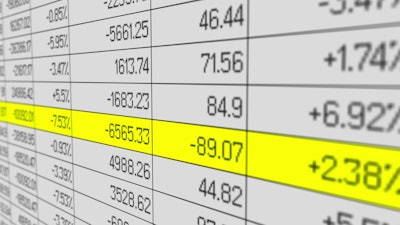
By Wayne Brozek

As a construction dealer service manager, you can struggle with whether you are paying your technicians too little or too much. How do you know what the appropriate compensation range is?
With today’s technician shortage, you know you have to be equal to or better than your market place, but what makes sense for your operation? You’ll need to ask yourself several questions before you can answer this correctly.
 Wayne Brozek has been in product support at the dealer level for the past 30 years. In 2014 Wayne began doing consulting work with parts and service managers in North and South America. You can contact Wayne at [email protected].
Wayne Brozek has been in product support at the dealer level for the past 30 years. In 2014 Wayne began doing consulting work with parts and service managers in North and South America. You can contact Wayne at [email protected].First, your dealer ownership team will want to know the cost of sale percentage, or your gross margin on service labor sales. Say for example that your dealership is looking for 70 percent or greater gross margin on labor sales and your average pay range for all your technicians is $25 an hour. If you base things on a 1:1 ratio of one hour worked to one hour billed, that means you would need to charge an average labor rate of $83.00 an hour or higher to get in the 70 percent gross margin range.
Let’s call that 1:1 ratio your “billing efficiency.” With that ratio, you could say your billing efficiency is 100 percent, since your technicians worked one hour for one hour billed. Some manufacturers or service managers call that a “time and material” billing — whatever amount of time the technician had in the repair, you billed that amount.
But let’s first work through those calculations to ensure we are all on the same page.
The first one we want to calculate is gross margin percentage. To determine this, divide the gross margin by net sales and multiply the result by 100. For example, if you had a gross margin amount of $35.00, and a net sales amount of $69.00, to determine the gross margin percentage you would use this formula: $35/$69 = .51 x 100 = 51 percent.
Now that you understand how to calculate your gross margin percentage, let’s take a look at how you can determine what your sales price needs to be to obtain a target gross margin percentage. You first need to know your cost of sales. Let’s use the numbers in the above example to show how this is done. Subtract the gross margin ($35.00) from the net sale amount ($69.00) to get the cost of goods sold. Here’s the formula: $69.00 – $35.00 = $34.00.
Once you know both your gross margin percentage and your cost of sales, you can divide your cost of sales by the difference between 100 percent and your gross margin percentage goal, which in this case is 70 percent (100 -70 = 30 percent). Dividing the $34.00 cost of sales by 30 percent results in $113.33, which becomes the sales price you need in order to maintain a 70 percent gross margin.
Using the above example, you can see it’s relatively easy to know now to calculate what your labor rate would need to be to achieve a 70 percent gross margin. But what if you do not use the time and material billing method? What if instead you bill your technician time based on a specific job code?
For example, let’s say your job code system pays 2.5 hours for a particular model’s water pump removal and replacement, and your technician completes the repair in 2.0 hours. What would be your gross margin on that repair? Using our $34.00 cost of goods and $113.33 sales price from the example above, use this formula:
2.5 hours x $113.33 sales price = $283.33 revenue – 2.0 hours technician wages at $34.00 x 2.0 hours = $68.00 cost of goods sold.
$283.33 revenue – $68.00 cost of goods sold = $215.33 gross margin or $215.33/$283.33 = 76 percent gross margin.
I hope you have a better feel for how to measure gross margin and how to calculate a sales price to maintain a specific gross margin target. But the question remains: how does this all tie back to aligning your technician wage to your gross margin goal?
First let’s assume we have four technicians and we bill time and materials. To get our overall technician average wage, start by listing the hourly rate of all four:
- Bill- $18.75
- Tim- $22.00
- Fred- $25.50
- Sam- $26.50
To get our average labor cost per hour, total the hourly rates ($92.75) and divide it by the number of techs (four), which equals a $23.19 average cost per hour.
So, if you wanted to maintain a 70 percent gross margin what would your labor rate would need to be?
Here’s the formula: Take the average labor cost per hour ($23.19), divide it by 30 percent or .30 (100 percent minus 70 percent equals 30 percent). The result is $77.30. This means that in order to maintain a 70 percent gross margin we would have to have a labor sales price of $77.30.
Now you can begin to set pricing for your repairs or your shop rate based off a true gross margin target.










